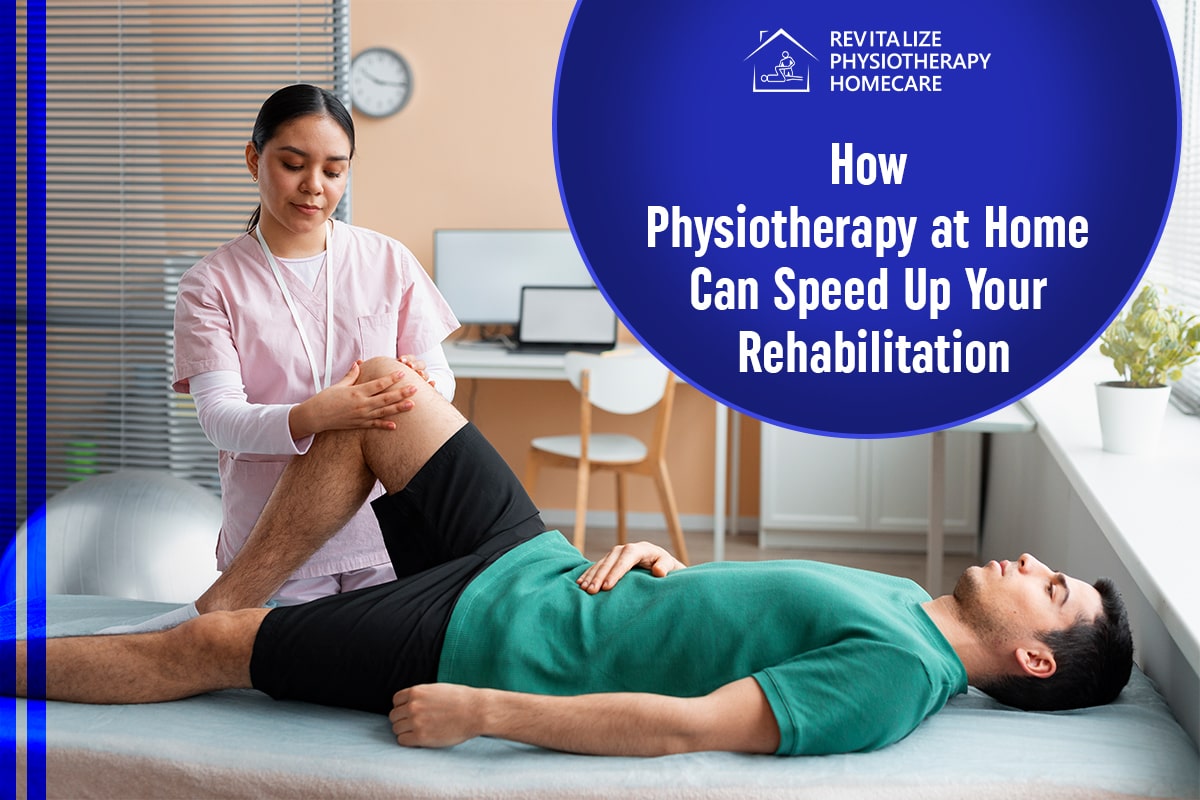How Physiotherapy at Home Can Speed Up Your Rehabilitation
Recovering from an injury or surgery can be a long and difficult process. Traditionally, this recovery has involved numerous trips to a physiotherapy clinic. However, the rise of home-based physiotherapy services is changing rehabilitation by providing a more convenient and sometimes more effective option.
This blog explores how home physiotherapy can greatly accelerate your recovery process and help you regain strength and mobility more quickly.
How Physiotherapy at Home Makes a Difference
Here We Learn how physio at home not only adapts to your personal needs but also fosters a more responsive and flexible approach to healing, making a profound difference in the speed and effectiveness of recovery.
Personalized Care in a Comfortable Setting
One of the primary advantages of at-home physiotherapy is the ability to receive personalized care in the comfort of your own home. Unlike in a clinic, your physiotherapist can tailor sessions specifically to your environment, making it easier to integrate your treatment with your daily activities. This personalized approach not only ensures comfort but can also lead to a faster recovery as treatments are directly aligned with your individual needs and the specific demands of your living space.
Reduced Stress and Increased Compliance
Traveling to and from a clinic can be especially difficult for people who suffer from physical pain or limited mobility. Home physiotherapy eliminates overall stress by reducing the need to travel, which can have a good impact on recovery times. Furthermore, when visits are more convenient, patients are more likely to stick to their therapy schedules, which helps with the recovery process.
Focused Attention and Time Efficiency
In contrast to clinic settings, where therapists may have to manage many clients at the same time, at-home physiotherapy sessions frequently give patients with their therapist's uninterrupted attention. This targeted approach allows sessions to be incredibly efficient, and therapy may be changed in real-time based on the patient's rapid input on the exercises and treatments being performed.
Safer Environment for Recovery
Many patients, particularly the elderly or those suffering from serious injuries, find it safer to get physiotherapy at home. There is a lesser danger of catching illnesses from other patients, which is an important consideration in hospital or clinic settings. Physiotherapists can also help optimize the home environment to reduce falls and ensure that the living area supports the patient's recovery objectives.
Integration with Daily Routines
Home-based therapy allows physiotherapists to observe patients in their everyday environment and integrate therapeutic exercises directly into daily routines. This practical approach helps patients understand how to apply the exercises throughout their day, effectively speeding up the rehabilitation process by making the therapy more relevant and practical.
Immediate Application of Techniques
Physiotherapists who visit patients at home can teach them how to execute exercises with their furnishings and surroundings. This strategy ensures that patients feel secure in performing their exercises appropriately between appointments. The ability to quickly adapt methods and alterations based on the therapist's recommendations promotes continual development and accelerates rehabilitation progress.
Family Involvement and Support
Having physiotherapy sessions at home allows additional family members to participate in the patient's healing process. The physiotherapist can teach family members how to effectively support their loved ones, help them comprehend the healing process, and provide rapid answers to any concerns they may have. This family involvement is crucial because it provides emotional support and encourages the patient to stick to their therapy plan.
Flexibility and Customization
Home physiotherapy offers greater flexibility in scheduling. Sessions can be arranged at times that best fit the patient’s energy levels and other commitments. This adaptability can be particularly beneficial for those who may find mornings or evenings more suitable for physical activity, depending on their health and energy patterns throughout the day.
Conclusion
Physiotherapy at home has several advantages that can considerably accelerate the rehabilitation process. Home-based physiotherapy offers the quickest and most successful recovery possible by providing customized treatment, convenience, safety, and the ability to use therapeutic approaches immediately.
For many patients, having a physiotherapist come to their house is more than a luxury; it is a transformative approach to treatment that alters the course of their rehabilitation for the better.




